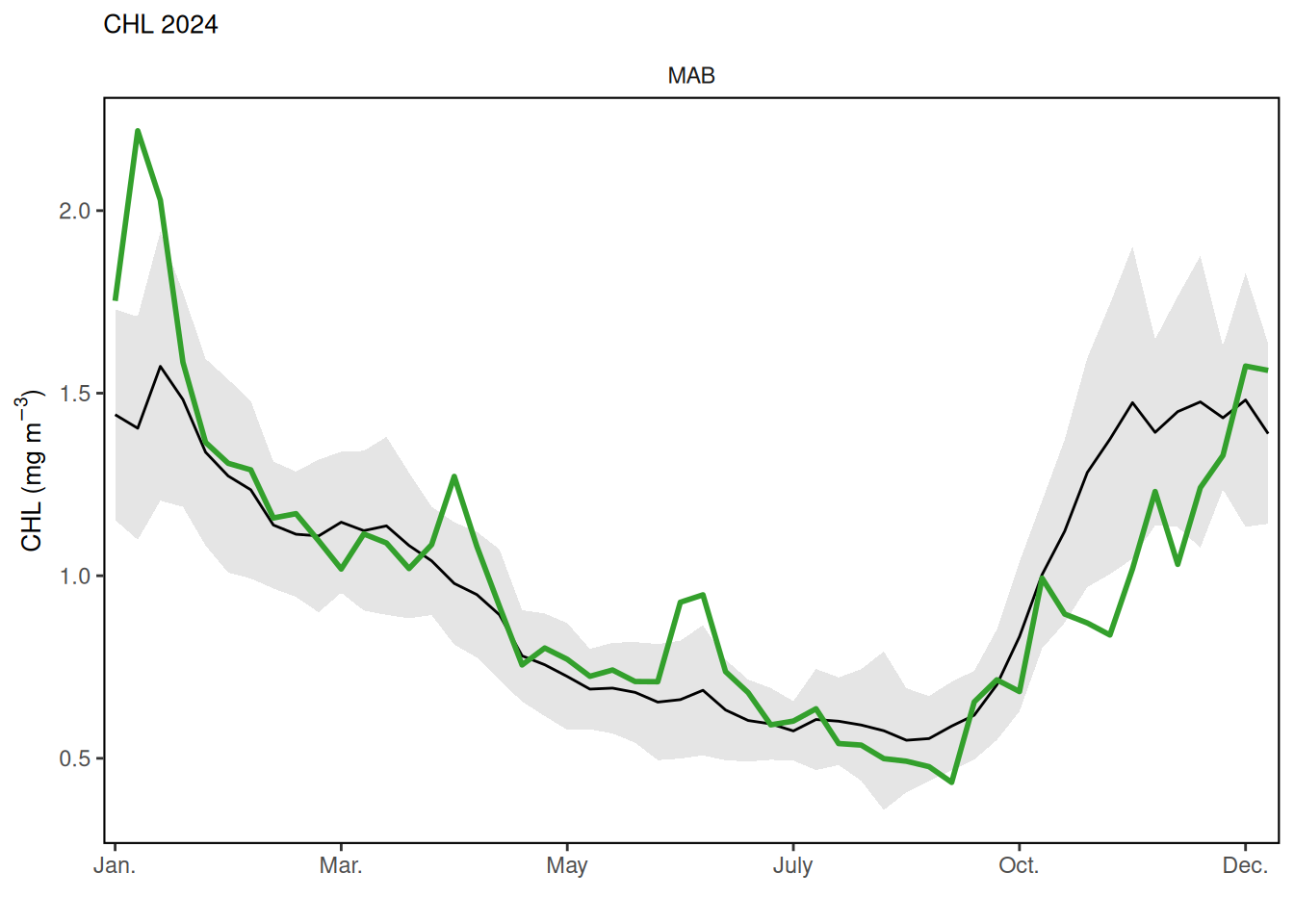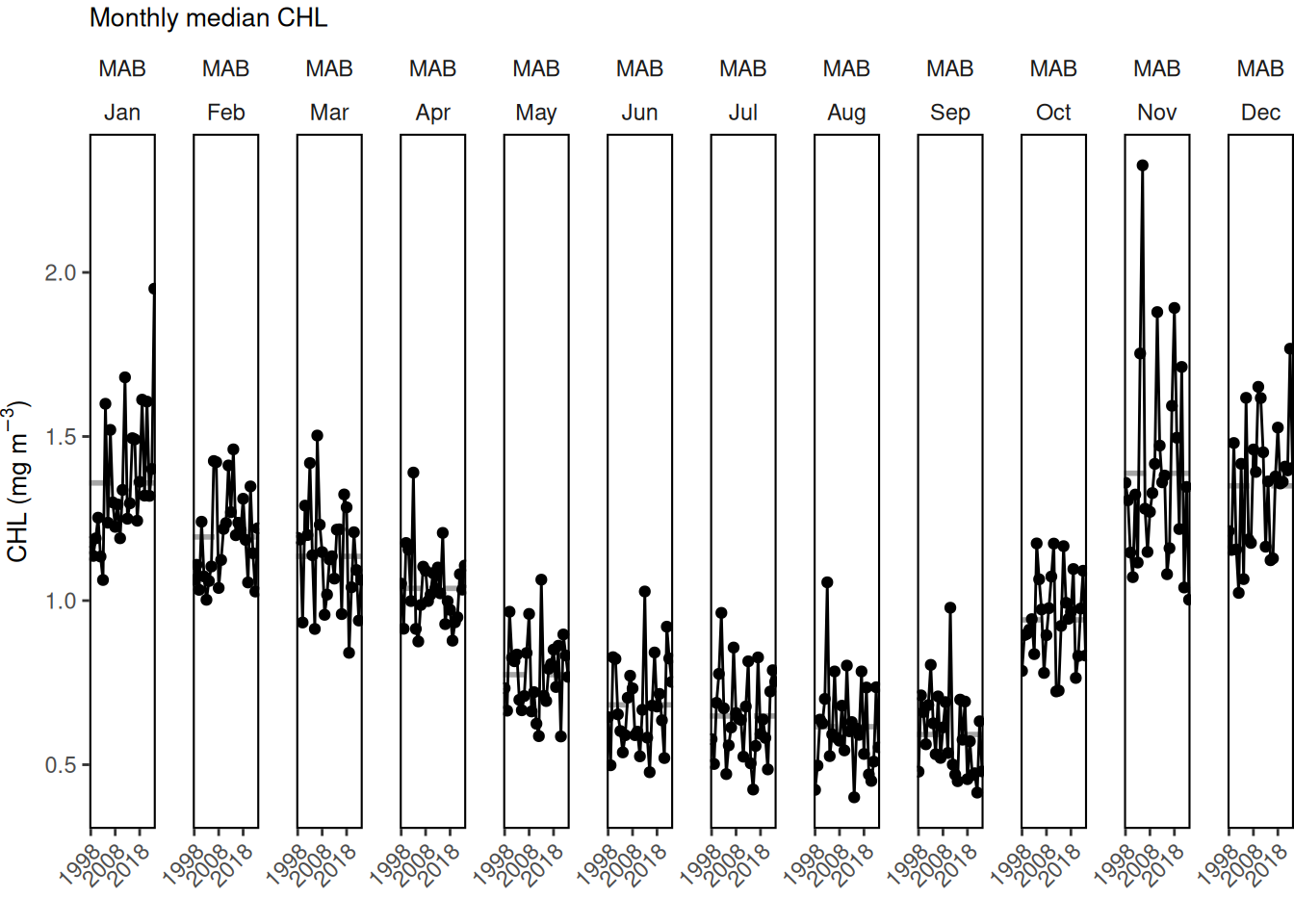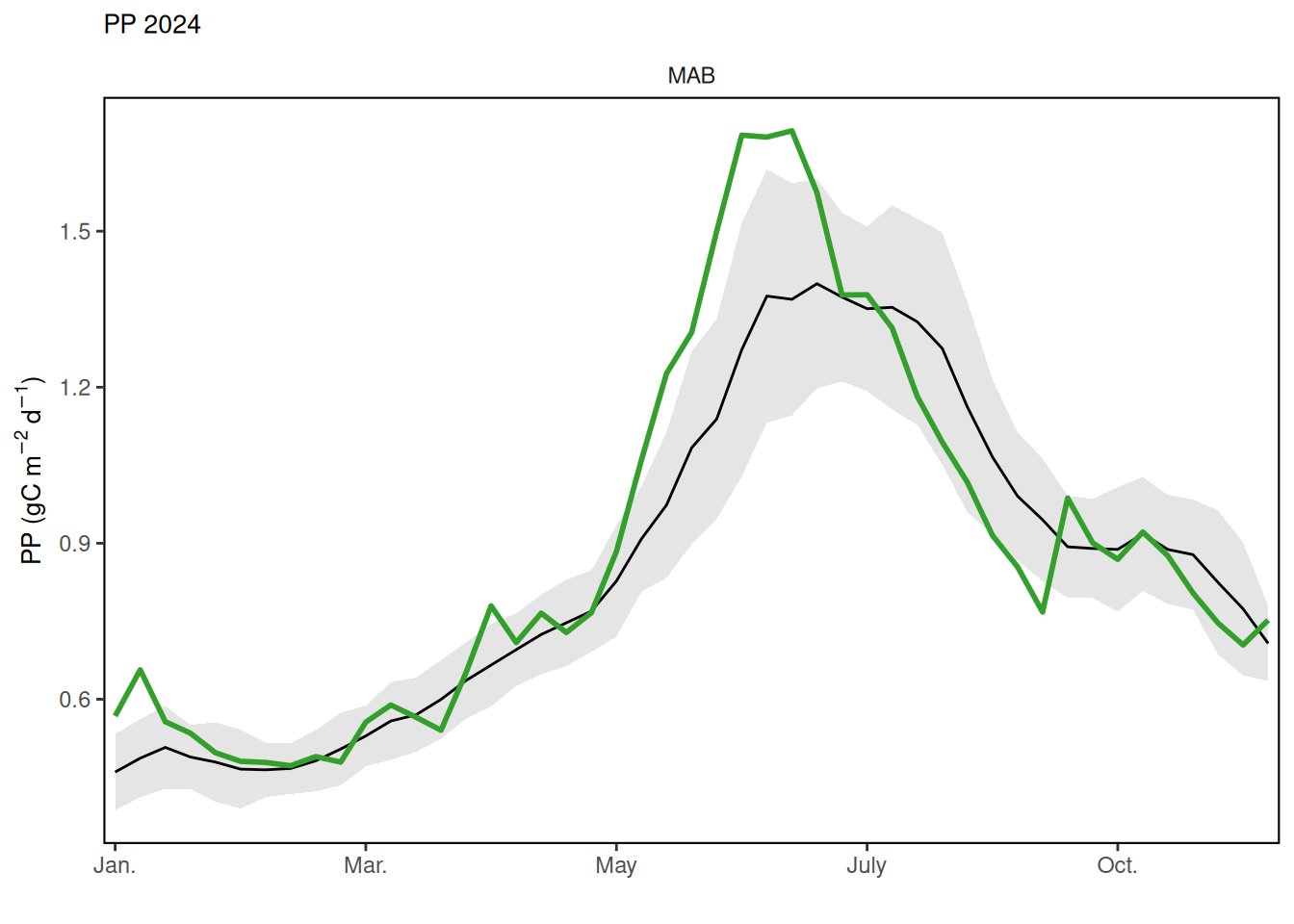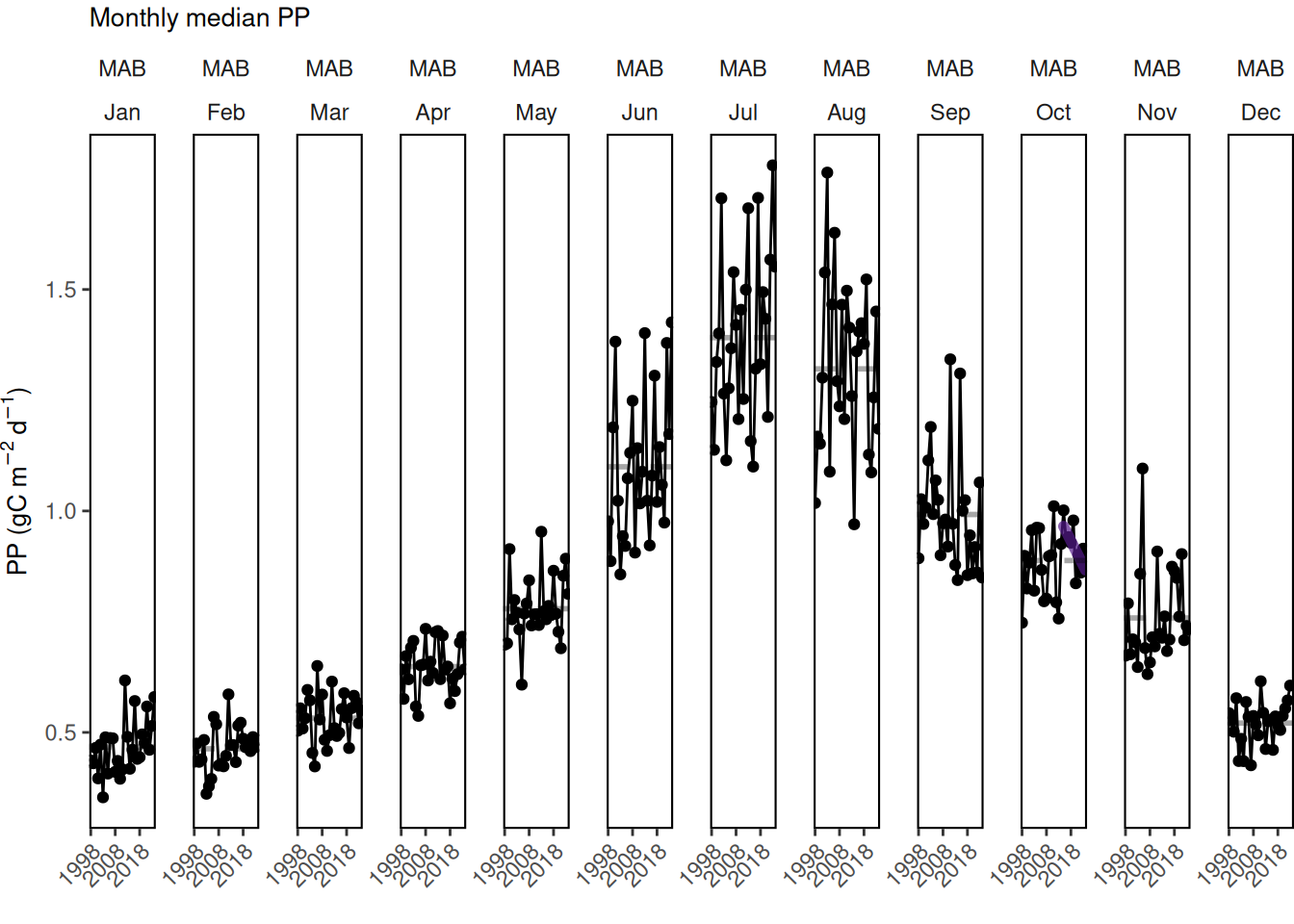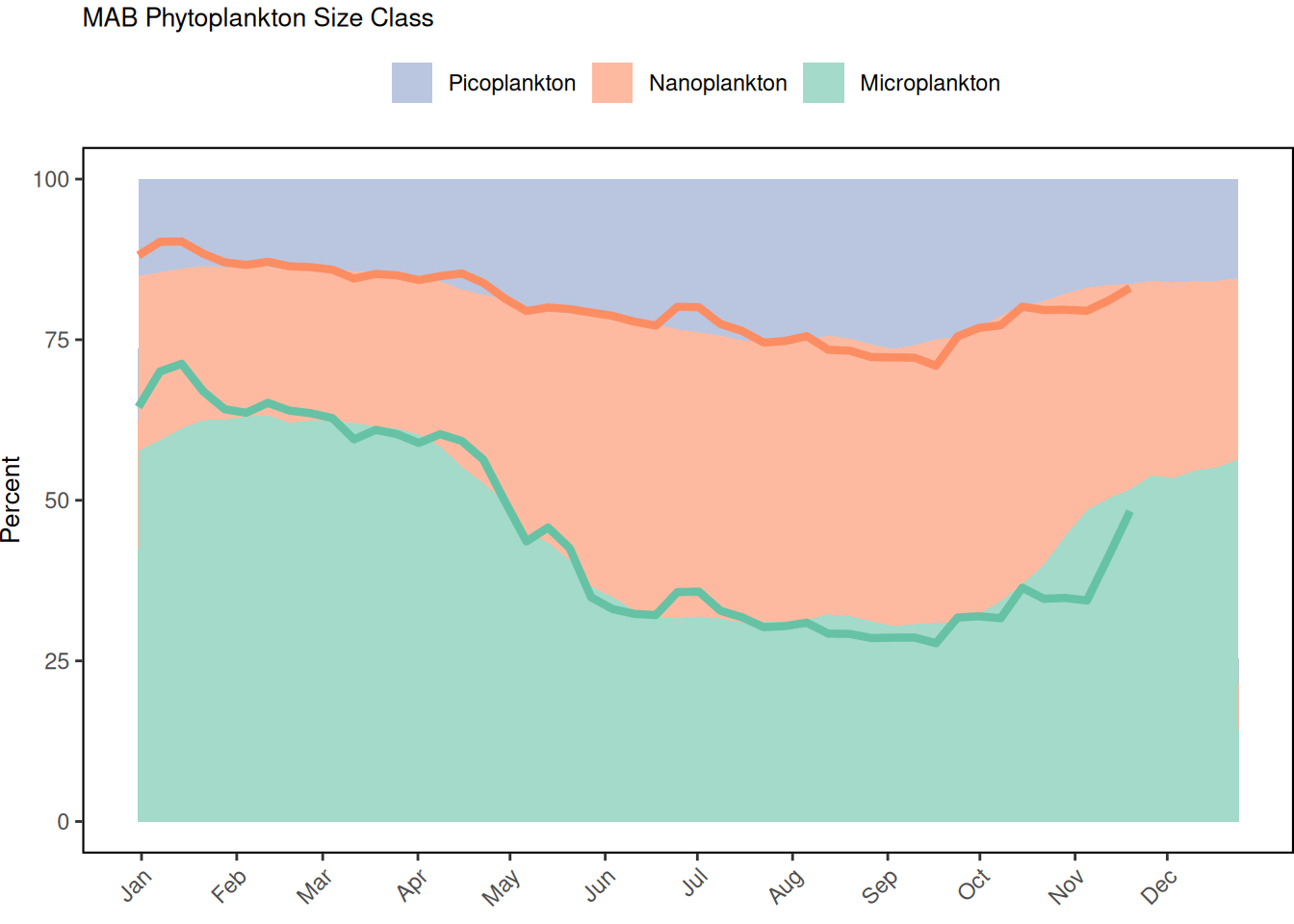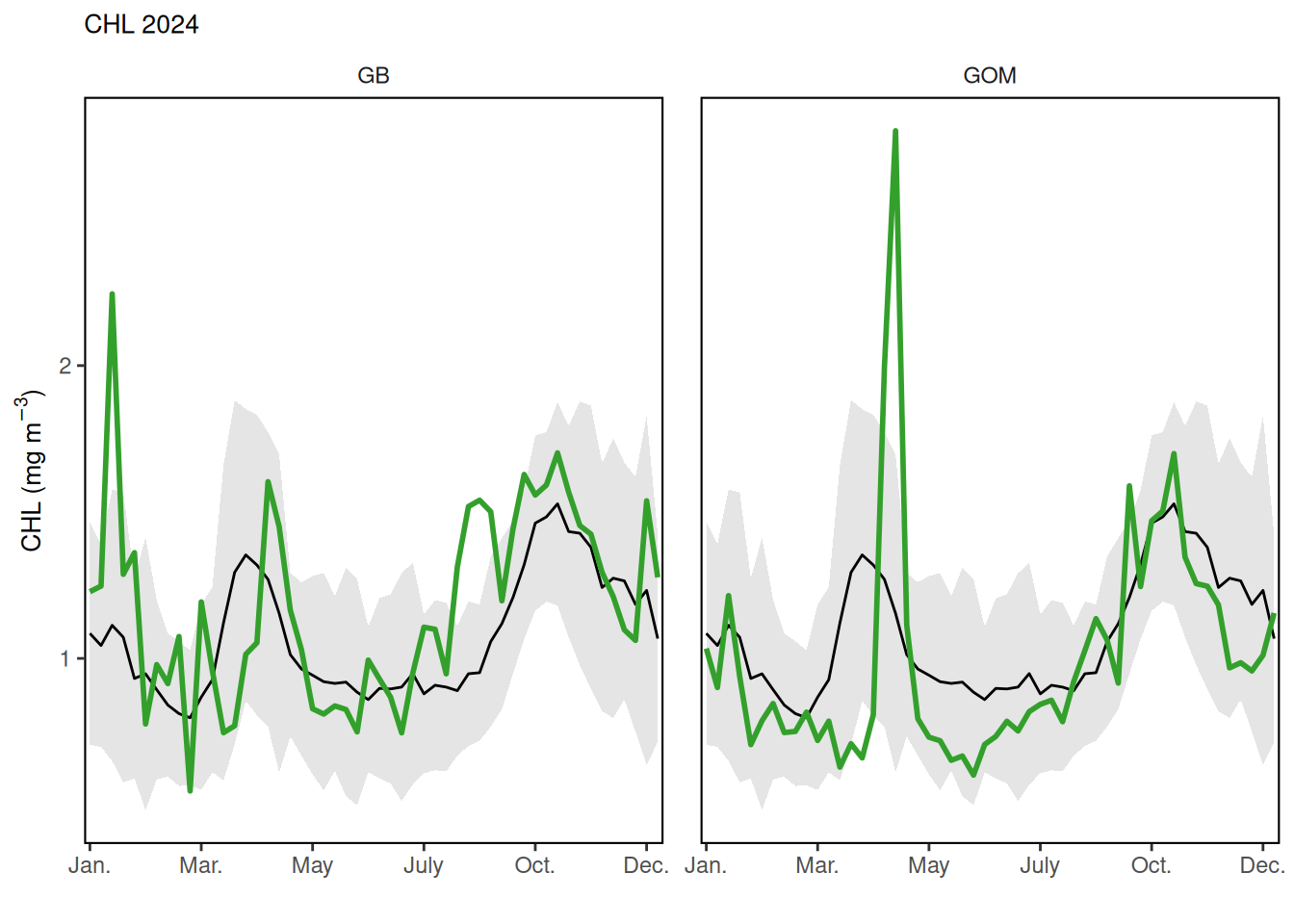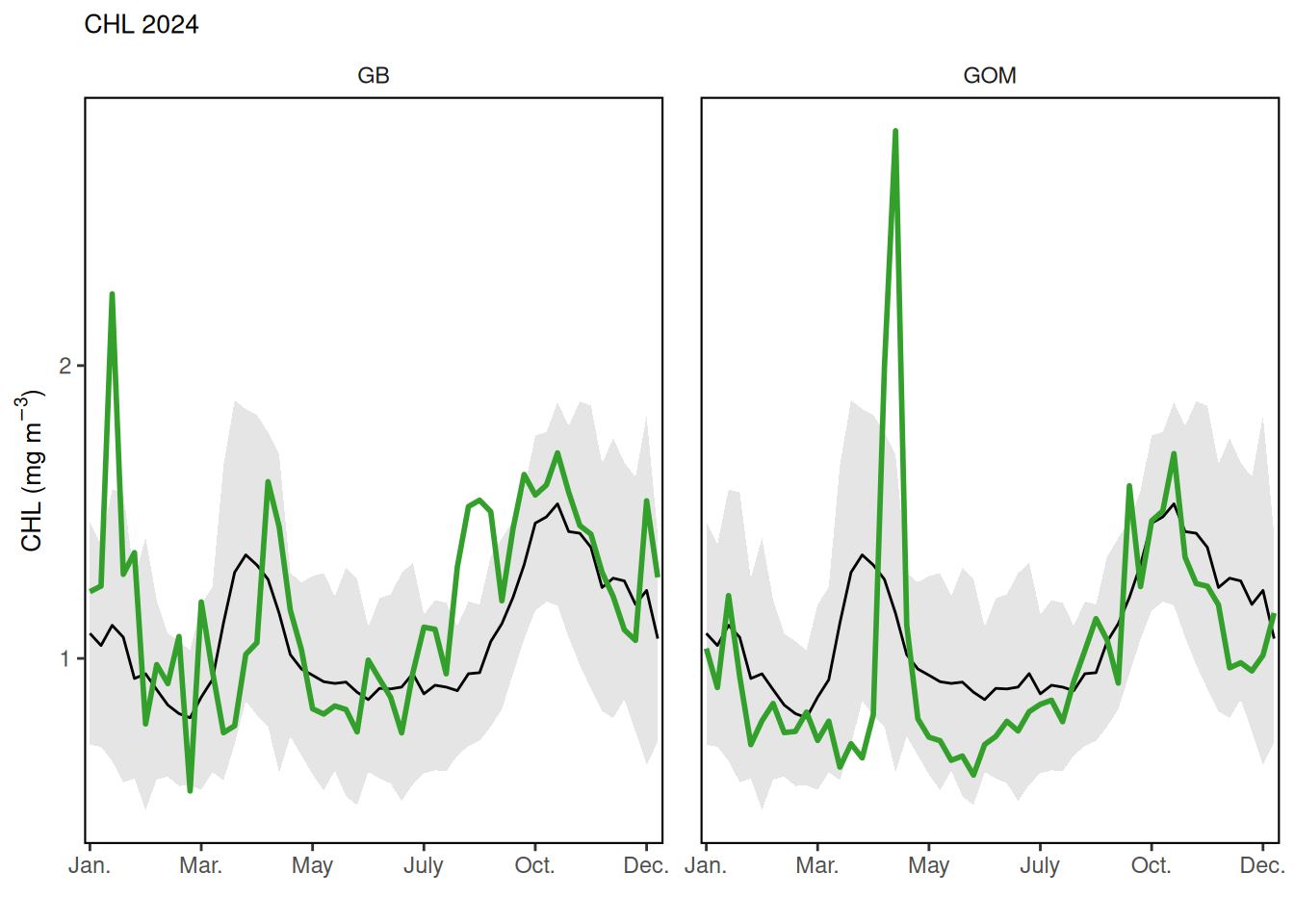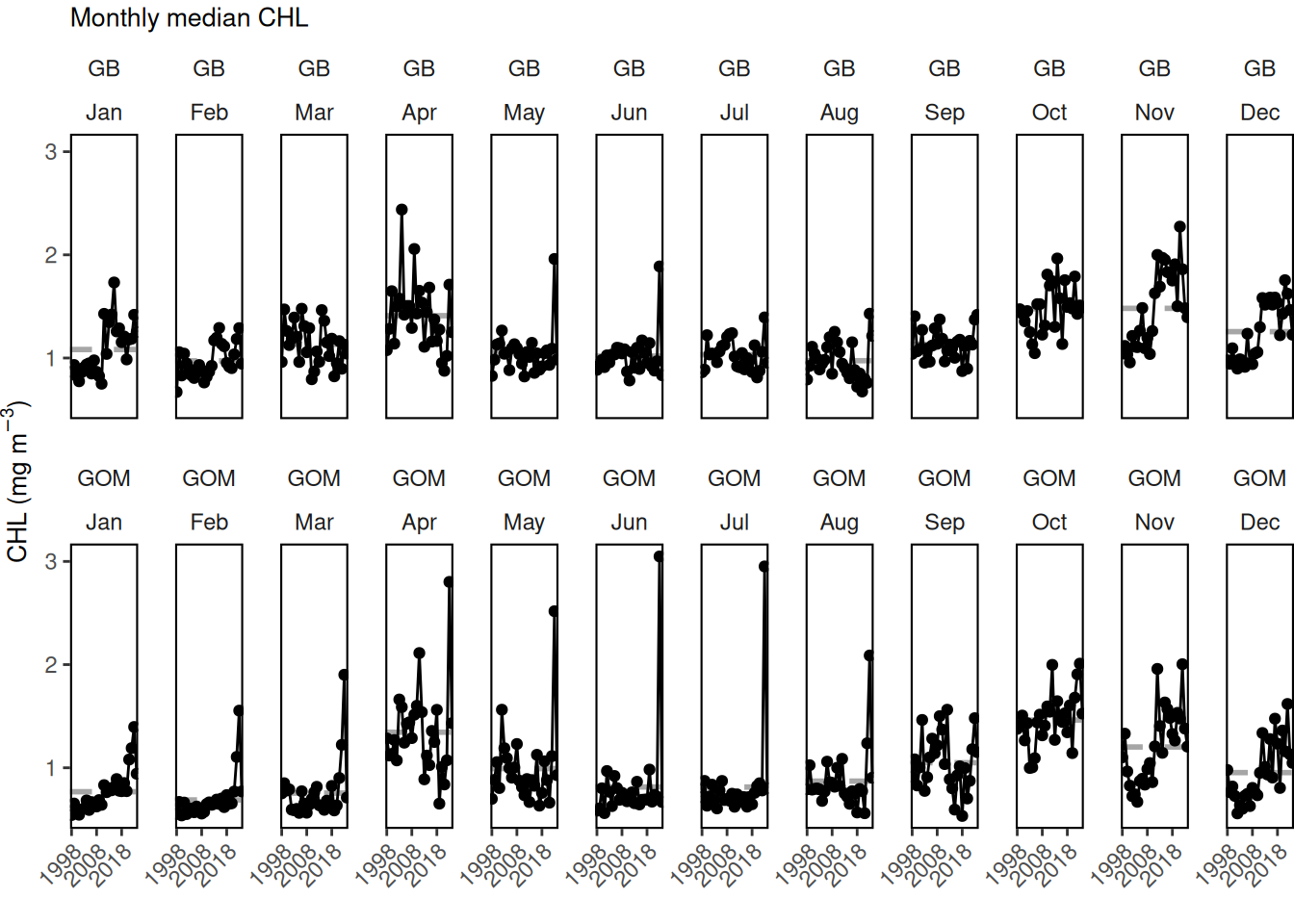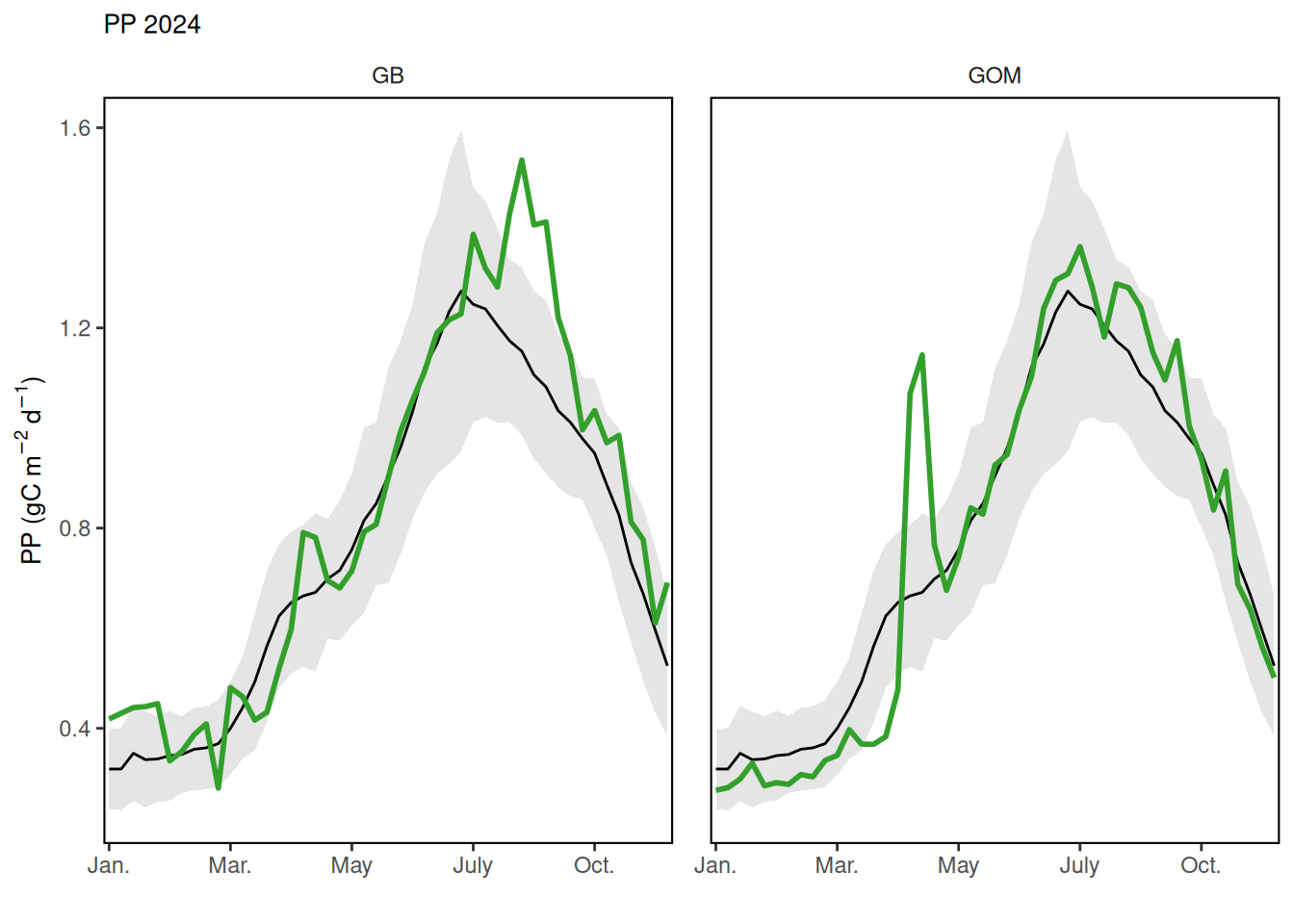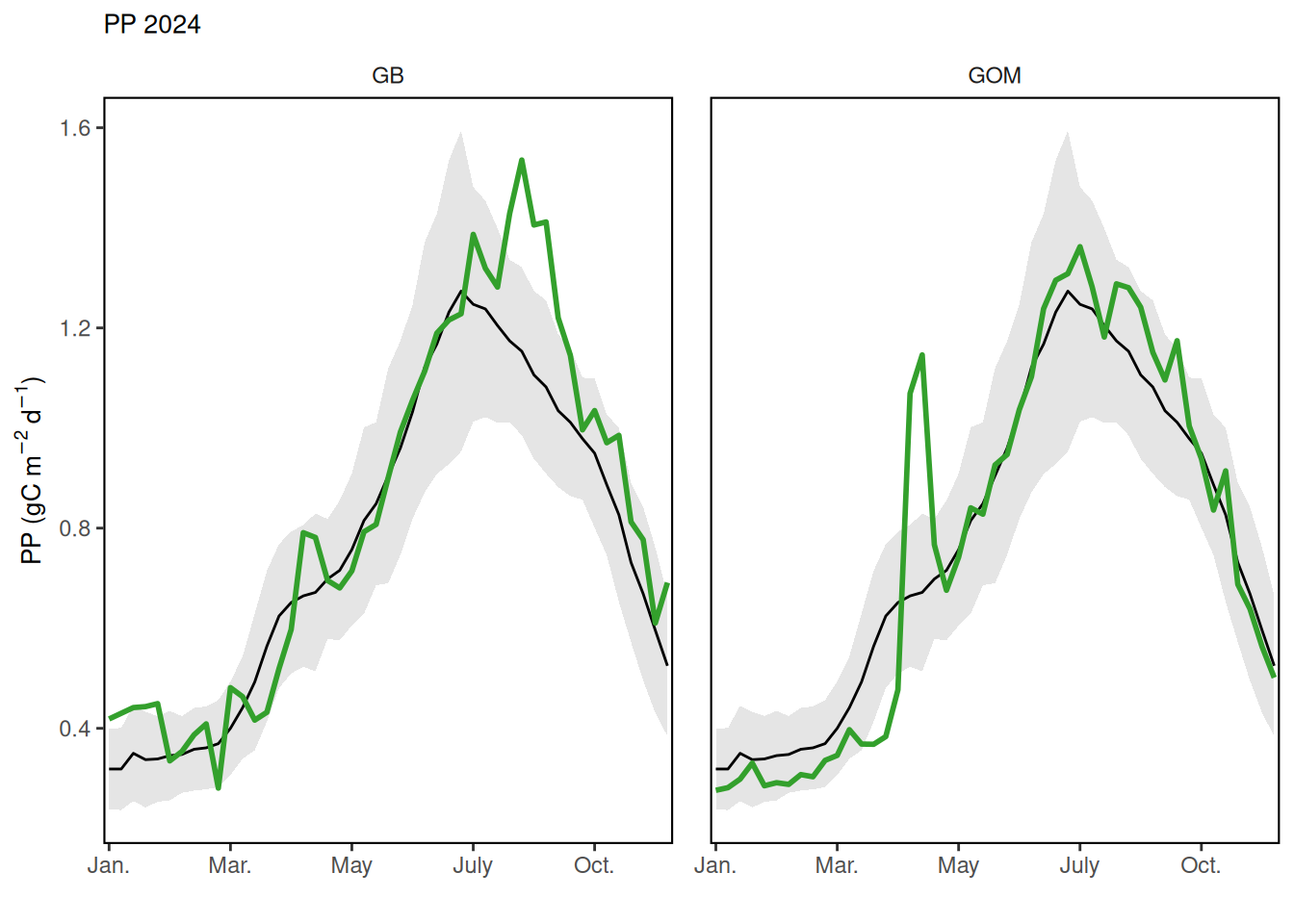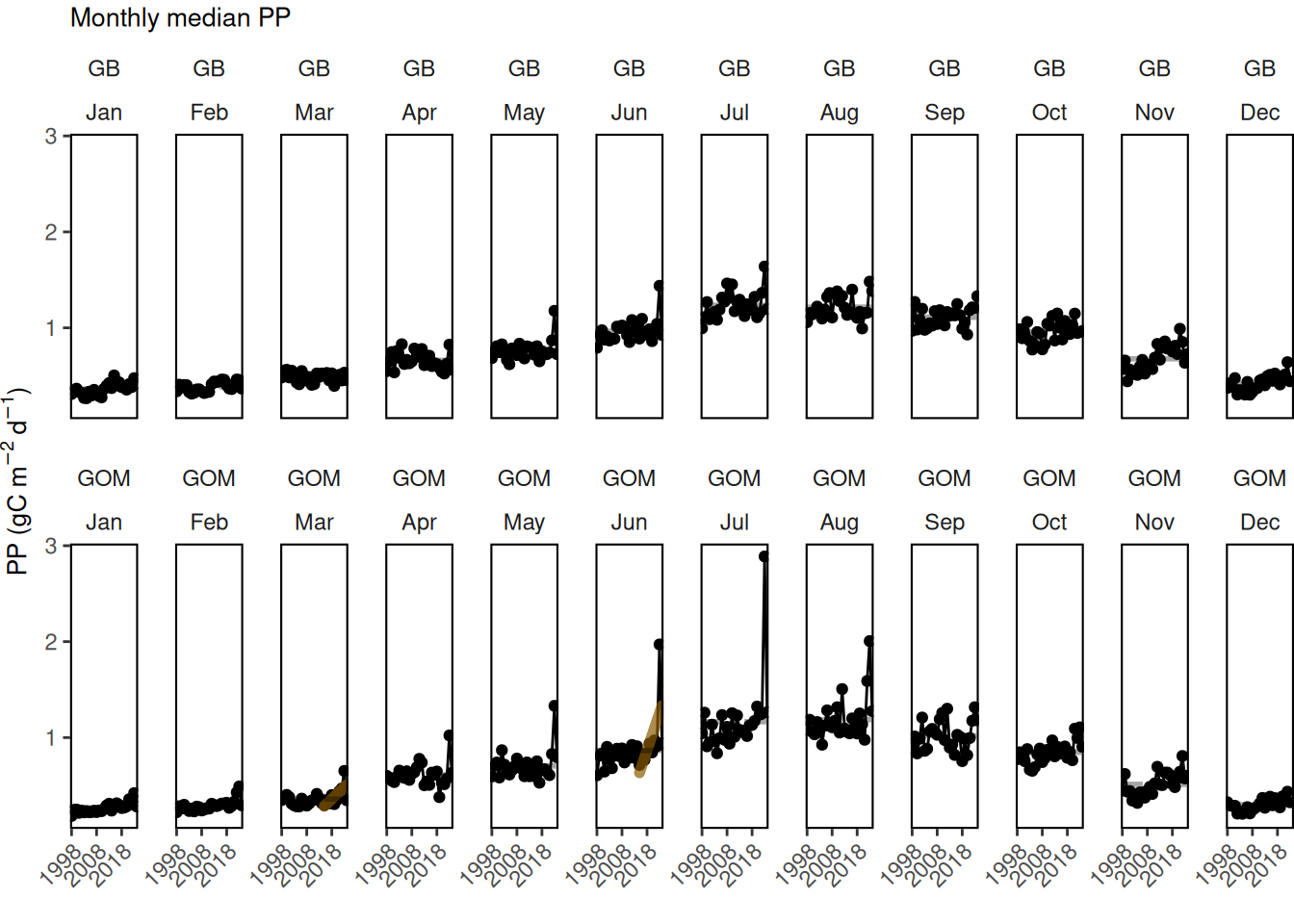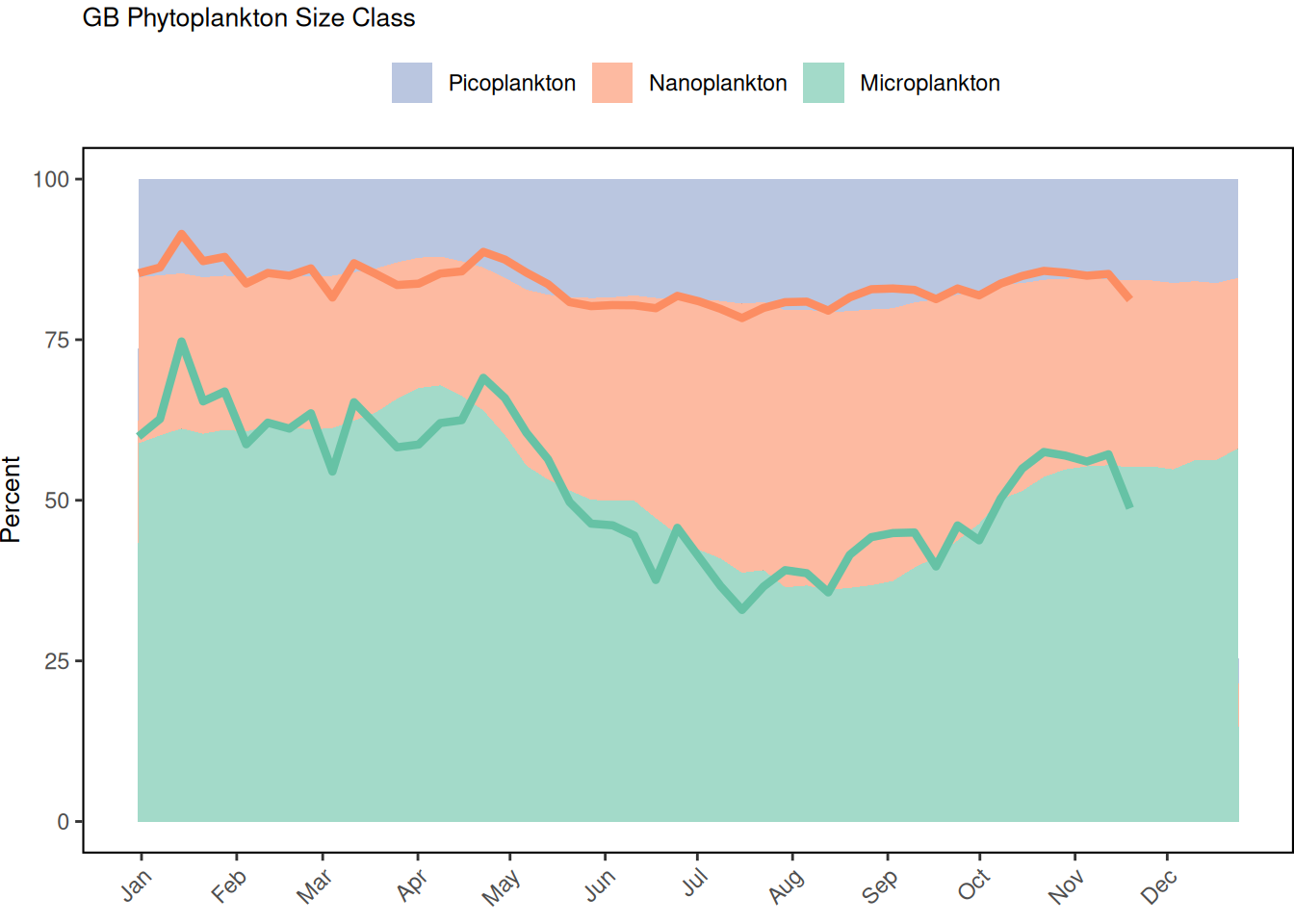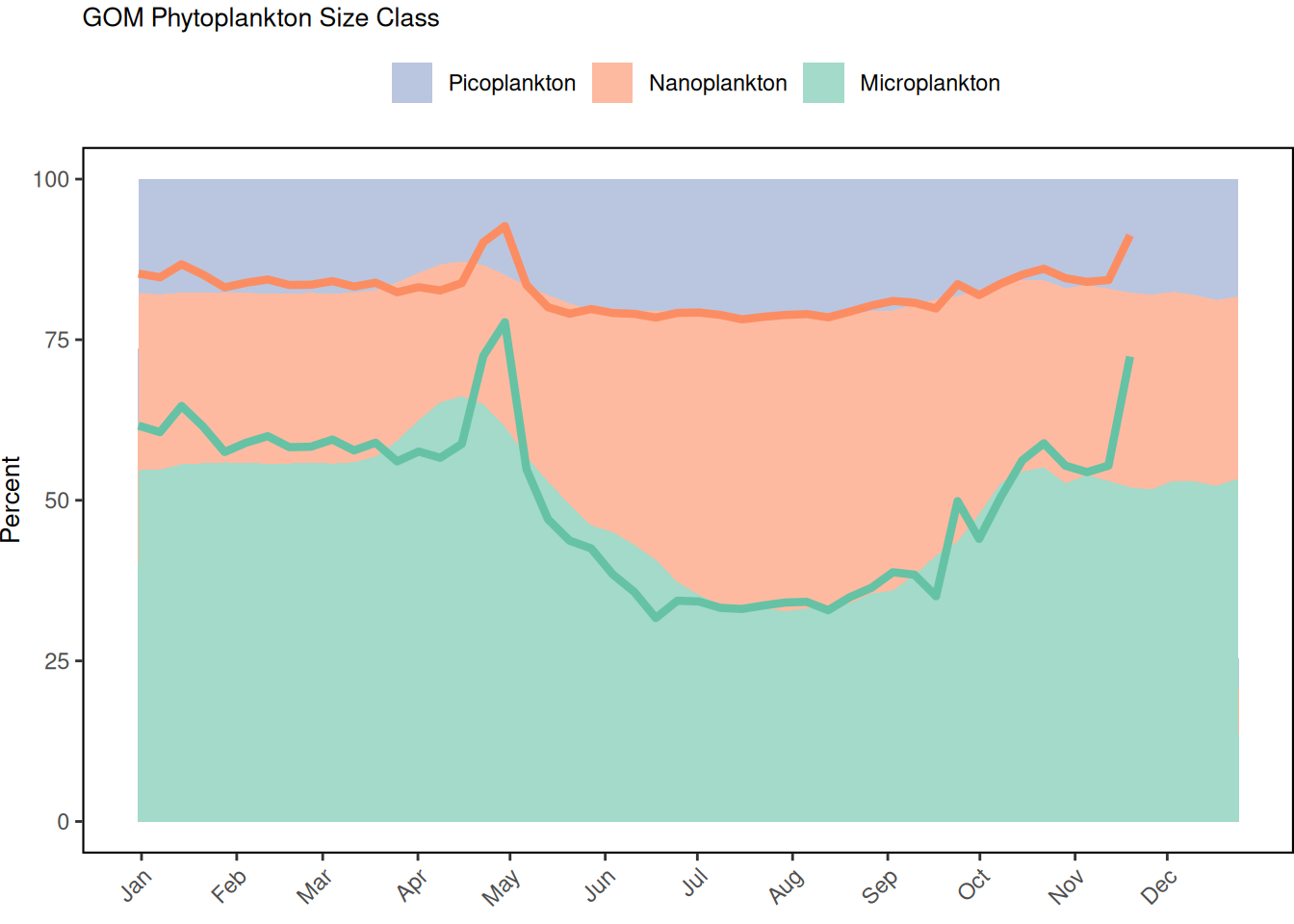2 Phytoplankton
Description: Satellite derived phytoplankton data including chlorophyll concentration, primary production, and phytoplankton size class for the Northeast Continental Shelf and ecological production units.
Indicator family:
Contributor(s): Kimberly Hyde
Affiliations: NEFSC
2.2 Key Results and Visualizations
The seasonal cycle of phytoplankton biomass typically includes peaks during the winter-spring and fall seasons and minimums during the summer months, however exact bloom timing varies by region. Primary productivity, increases during bloom periods due to increased biomass, but peaks during the summer months when daylight and temperatures are greatest. In 2024, concentrations of chlorophyll a (a proxy for biomass) were above average during the winter-spring and fall bloom periods in all regions. There was no evidence of a repeat of the widespread Tripos muelleri bloom observed in 2023. There was, however, an atypical localized coccolithophore bloom south of Long Island, New York in late June to early July.
Mid-Atlantic primary production peaked in early summer in 2024 and was above average in late fall, which is attributed to the above average late fall bloom. Georges Bank fall productivity was also above average due to the abnormally large fall phytoplankton bloom. Conversely, the Gulf of Maine spring bloom accounted for the largest above average spike in that region.
The seasonal cycles of phytoplankton size distribution are typically dominated by larger-celled microplankton (> 20 um) during the winter-spring and fall bloom periods, while smaller-celled nanoplankton (0.2-20 um) dominate during the warmer summer months. The smallest phytoplankton group, picoplankton (<0.2 um), represent the smallest fraction of the phytoplankton community in the region. Phytoplankton size class distributions were near average for most of the year, except during the early fall bloom. The 2024 phytoplankton size class distribution was near the seasonal climatology in all regions except during the above average phytoplankton bloom periods.
There is high interannual variability of the seasonal phytoplankton cycle. At the monthly scale, MAB chlorophyll and primary production are increasing during January, suggesting that the fall bloom period is extending into early winter. The significant decrease in MAB chlorophyll in September chlorophyll is likely related to warmer temperatures persisting into early fall and increased nutrient limitation. Fall and winter chlorophyll and primary production are increasing on Georges Bank and Gulf of Maine.
2.3 Indicator statistics
Spatial scale: By EPU and gridded for the entire shelf
Temporal scale: Daily, weekly, monthly, annual, climatology (1998 to 2020)
Synthesis Theme:
2.4 Implications
Phytoplankton abundance, productivity, diversity, cell size, phenology, and carbon fluxes are regulated by the local physical and chemical environment and grazing. Interannual and climatological changes in temperature, freshwater inputs (due to ice sheet melting and/or enhanced river discharge), wind direction, and wind speed can alter the circulation patterns, upwelling conditions, and nutrient fluxes, directly affecting the timing, location, species composition of phytoplankton blooms in the NES. As the NES responds to warming, changing phenologies, changing chemistry, and changes in circulation patterns, we must understand how varying biophysical interactions control phytoplankton and subsequently affect fisheries, their habitats and the people, businesses and communities that depend on them.
2.5 Get the data
Point of contact: kimberly.hyde@noaa.gov
ecodata name: ecodata::chl_pp
Variable definitions
- Chlorophyll; Concentration of chlorophyll a in the near surface (first euphotic depth) waters; mg m^-3
- Chlorophyll anomaly; Ratio of chlorophyll a concentration to the long-term (1998 to present year) climatology; unitless (ratio)
- Primary productivity; Daily net primary production of biomass expressed as carbon per unit volume in seawater per day; gCarbon m^-2 d^-1
- Primary productivity anomaly; Ratio of net primary production to the long-term (1998 to present year) climatology; unitless (ratio)
- Microplankton chlorophyll; Concentration of chlorophyll a in the near surface (first euphotic depth) waters from the microplankton (20-200 µm) fraction; mg m^-3
- Nanoplankton chlorophyll; Concentration of chlorophyll a in the near surface (first euphotic depth) waters from the nanoplankton (2-20 µm) fraction; mg m^-3
- Picoplankton chlorophyll; Concentration of chlorophyll a in the near surface (first euphotic depth) waters from the picoplankton (0.2-2 µm) fraction; mg m^-3
- Annual summed primary production - TBD
Indicator Category:
Indicator Category:
Publicly available satellite data that are processed and analyzed
2.7 Accessibility and Constraints
No response
tech-doc link https://noaa-edab.github.io/tech-doc/chl_pp.html
